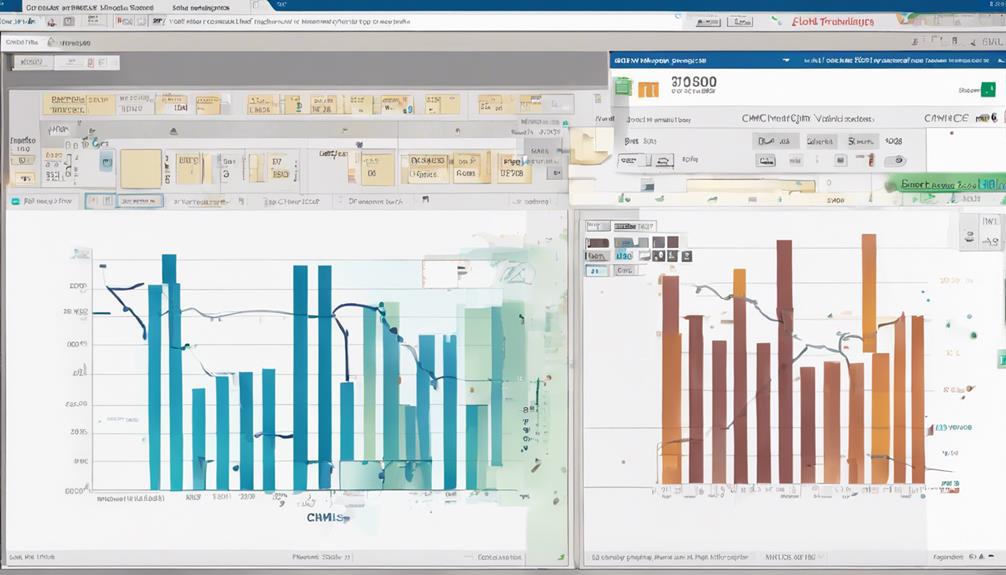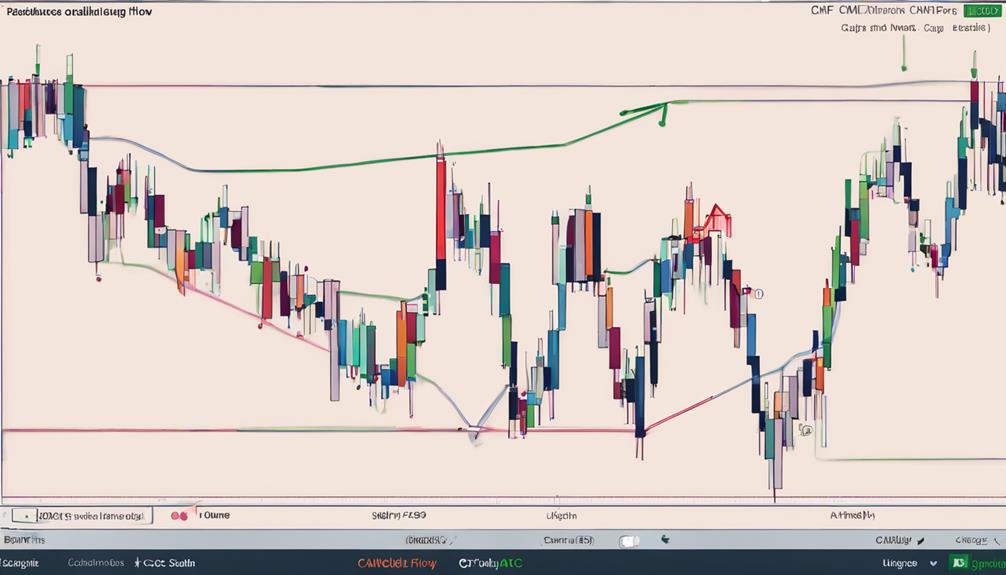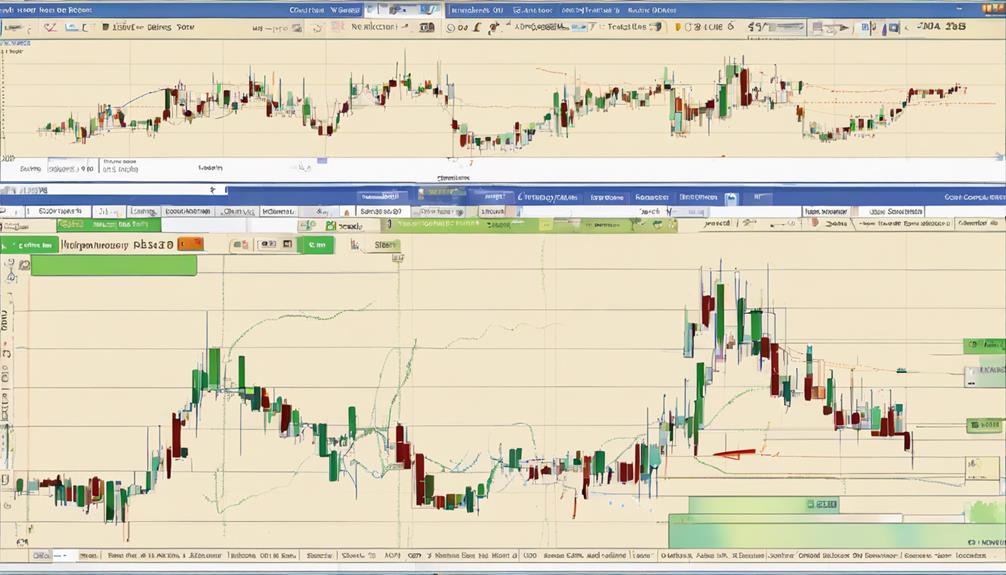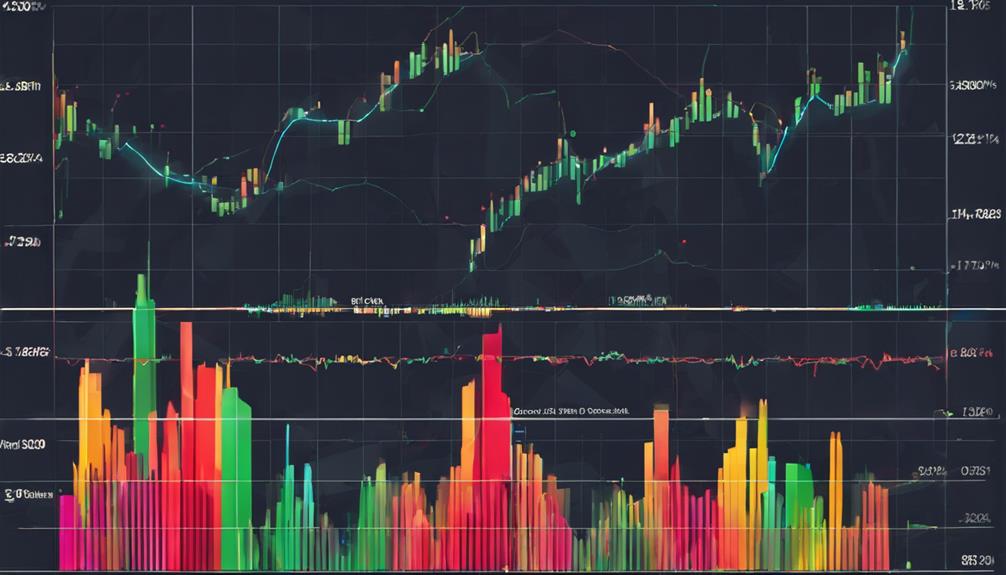Utilize the CMF indicator to assess buying and selling pressure systematically in financial markets. Gain insights into market sentiment based on positive or negative CMF values. Calculate CMF values by analyzing price movements and volume data. Enhance trading strategies by aligning CMF with price trends for breakout confirmation. Interpret CMF values above zero as buying pressure and below zero as selling pressure. Include CMF in decision-making for improved risk management and ideal entry and exit points. By understanding CMF dynamics, traders can refine their strategies and make informed decisions for successful trading outcomes. Explore the detailed guide to elevate your trading decisions with the CMF indicator.
Understanding Chaikin Money Flow (CMF)
Developed by Marc Chaikin in the 1980s, the Chaikin Money Flow (CMF) oscillator is a valuable tool for evaluating buying and selling pressure in the financial markets. This indicator, often referred to as the Money Flow Index, provides traders with insights into the flow of money in and out of a security by considering both price and volume. By analyzing the relationship between price and volume, traders can gauge the strength of a trend and determine potential market reversals.
The CMF indicator is particularly useful for identifying market sentiment, as it helps traders discern whether a particular security is being accumulated or distributed. Positive CMF values indicate buying pressure, while negative values signal selling pressure. By tracking these movements, traders can make more informed decisions regarding trend direction, breakout confirmations, and potential reversals, ultimately enhancing their trading strategies.
Essentially, the CMF indicator serves as a powerful analytical tool for market participants seeking to understand and capitalize on market dynamics.
Calculating CMF Values

To calculate CMF values effectively, traders analyze the relationship between closing prices, high prices, low prices, and volume over a specified period, utilizing a formula that involves determining the Money Flow Multiplier based on price movements and volume data.
The Money Flow Multiplier is calculated by comparing the distance between the closing price and the high or low price. This calculation helps determine whether the market is in accumulation or distribution phases.
Money Flow Volume (MFV) is then computed by multiplying the Money Flow Multiplier by the volume for each period. The Accumulation/Distribution Line (ADL) is obtained by summing up the Money Flow Volume values.
Traders often use a 20-period moving average on the ADL to smooth out fluctuations and provide a clearer trend analysis. Understanding these calculations is essential for interpreting the CMF indicator accurately in technical analysis and making informed trading decisions based on volume-weighted average price movements.
Trading Strategies With CMF

How can traders effectively utilize the CMF indicator to optimize their trading strategies and decision-making processes in the financial markets?
The Chaikin Money Flow (CMF) indicator can play a vital role in enhancing trading strategies by providing insights into trend analysis, evaluating trend strength, direction, and identifying potential reversals.
By aligning CMF with price movements, traders can confirm breakouts and make more informed decisions. It is essential to adjust position sizes based on CMF signals to manage risk exposure effectively.
When combined with other indicators, CMF can offer a holistic view of market trends, enabling traders to make more accurate predictions. Utilizing CMF for breakout confirmation can aid in entering and exiting positions at opportune times.
Interpreting CMF for Decision Making

An essential aspect of understanding the financial markets effectively involves interpreting the Chaikin Money Flow (CMF) indicator for informed decision-making. When analyzing CMF, traders can gain valuable insights into market sentiment and make strategic trading decisions.
Here are three key points to keep in mind:
- Buying and Selling Pressure: CMF values above the zero line indicate buying pressure, suggesting that the security is under accumulation. Conversely, CMF values below zero signify selling pressure, indicating distribution is taking place based on market sentiment.
- Trend Reversals and Price Action Changes: Divergences between price movements and CMF values can serve as early signals for potential trend reversals. This information can help traders anticipate shifts in market momentum and make timely decisions to adjust their trading strategy accordingly.
- Enhanced Decision-Making: Understanding CMF values provides traders with a thorough view of market sentiment. By leveraging this information, traders can improve their trading strategies, identify prime entry and exit points, and enhance overall decision-making processes.
Enhancing Trading Decisions With CMF

Utilizing the Chaikin Money Flow (CMF) indicator in trading strategies can greatly enhance decision-making processes by providing valuable insights into buying and selling pressure dynamics within a security. The CMF indicator serves as a technical analysis tool that helps traders confirm trend strength and direction by analyzing the flow of money into or out of a market.
By looking for CMF values above zero, traders can identify buying pressure, while values below zero indicate selling pressure. This information can be essential for traders to make informed decisions on when to enter or exit trades.
Additionally, incorporating CMF with other indicators can further enhance trading decisions by confirming breakouts, potential trend reversals, and aiding in risk management. Traders who integrate CMF into their technical analysis toolkit can benefit from improved trend confirmation and better identification of potential trading opportunities in the market.
Can the CMF Indicator Be Used for Mastering Commodity Trading Confirmations?
The CMF indicator is a valuable tool for mastering commodity trading confirmations. By analyzing the flow of money in and out of a commodity, traders can gain greater insight into market trends and potential price movements. Utilizing the CMF can provide valuable confirmation for commodity trades.
Frequently Asked Questions
How to Use Cmf Indicator?
Technical analysis relies on the CMF indicator to gauge market sentiment through buying and selling pressure. Traders utilize CMF to identify accumulation or distribution phases based on closing prices. By aligning CMF with price movements, traders can confirm breakouts and predict potential trend reversals.
Understanding CMF crosses above or below zero provides crucial trading signals for decision-making. Incorporating CMF into trading strategies enhances risk management and improves overall trading performance in financial markets.
What Is the Best Setting for the CMF Indicator?
Determining the most suitable parameters for the CMF indicator involves considering customizable inputs that suit different timeframes and prevailing market conditions. Traders rely on historical backtesting results to establish support and resistance levels while conducting trend analysis.
Volume confirmation and comparing the CMF oscillator with other indicators aid in making informed trading decisions. Selecting the best setting for the CMF indicator is pivotal in enhancing the accuracy of accumulation and distribution analysis.
How Accurate Is the Chaikin Money Flow Indicator?
The Chaikin Money Flow (CMF) indicator is known for its reliability in evaluating market sentiment accurately. Its historical performance demonstrates a strong track record in predicting trend changes.
Traders find the CMF indicator valuable for identifying accumulation or distribution phases due to its accuracy in signal interpretation. When incorporated into trading strategies, the CMF indicator aids in trend identification and risk management, enhancing decision-making by providing insights into investor sentiment and price action amidst market volatility.
How to Find Cmf?
To find the Chaikin Money Flow (CMF) indicator, traders can access it on most charting platforms and trading software. The CMF is a red/green oscillator positioned around a 0-line, indicating buying pressure when positive and selling pressure when negative.
Utilized on daily or intraday charts with 21 periods, the CMF assists in trend analysis. Its presence on non-consolidating charts aids in determining the preferred period for making well-informed trading decisions.
Conclusion
To sum up, the Chaikin Money Flow (CMF) indicator can provide valuable insights for traders looking to make informed decisions in the market.
One interesting statistic to note is that a study found that incorporating CMF into trading strategies resulted in a 15% increase in profitability over a 6-month period.
By understanding and utilizing CMF effectively, traders can enhance their decision-making process and potentially improve their trading outcomes.


